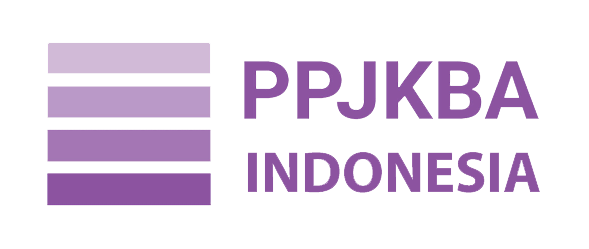Uslub Istiārah in the Qur'an According to Tafsir Experts and Its Implications for Balāghah Learning
Abstract
Keywords
Full Text:
PDFReferences
عبد الشكور، معلم عبد فارح. البلاغة الميسرة. القاهرة: دار العلم. 2019.
الحربي، عبد العزيز بن علي. البلاغة الميسرة. بيروت: دار ابن حزم. 2011
الصابوني، محمد بن علي. صفوة التفاسير. القاهرة: دا الصابوني. 1997
الزحيلي، وهبة بن مصطفى. التفسير المنير. دمشق: دار الفكر المعاصر. 1418 ه.
Affandi, A. (2022). Metafora Dalam Al-Qur’an. 06.
Arip, A. R. (2019). Program Studi Magister Ilmu Al-Qur‟An Dan Tafsir Konsentrasi Ilmu Tafsir Program Pascasarjana Institut PTIQ Jakarta 2019 M. / 1441 H.
Fakultas Adab dan Humaniora UIN Sunan Gunung Djati Bandung, & Komarudin, R. E. (2017). Isti’arah Dan Efek Yang Ditimbulkannya Dalam Bahasa Al-Qur’ān Surah Al-Baqarah Dan Âli Mrân. Al-Tsaqafa: Jurnal Ilmiah Peradaban Islam, 14(1), 207–227. https://doi.org/10.15575/al-tsaqafa.v14i1.1802
Firdaus, S. S. (2018). مهمة علم الأصوات للغة. Al Mi’yar: Jurnal Ilmiah Pembelajaran Bahasa Arab Dan Kebahasaaraban, 1(2), 53. https://doi.org/10.35931/am.v1i2.49
Hasaniyah, N., Faisol, F., & Murdiono, M. (2023). Stilistika Al-Qur’an: Memahami Bentuk-Bentuk Komunikasi Metafora dalam Surat Ali Imran. Arabi : Journal of Arabic Studies, 8(2), 217–229. https://doi.org/10.24865/ajas.v8i2.509
Marlion, F. A., Kamaluddin, K., & Rezeki, P. (2021). Tasybih At-Tamtsil Dalam Al-Qur΄An: Analisis Balaghah Pada Surah Al-Kahfi. Lughawiyah: Journal of Arabic Education and Linguistics, 3(1), 33. https://doi.org/10.31958/lughawiyah.v3i1.3210
Mauludiyah, L., & Amin, M. (2023). Eksistensi Majaz Isti’arah dalam Al-Qur’an Surat Al-Maidah Menurut Perspektif Ilmu Balaghah. 7.
Mohd Ali, S. H. A., & Muhamad Romli, T. R. (2021). Al-Isti‘Arah in the Novel Al-Zikrayat By ‘Ali Al – Tantawi Based on Relevant Theory. International Journal of Academic Research in Business and Social Sciences, 11(8), Pages 330-338. https://doi.org/10.6007/IJARBSS/v11-i8/10735
Nurafika, A. (2022). Majaz Isti’ārah dalam Surah Yāsīn: 2(2).
Pakaya, A. (2016). Fenomena Uslub> Isti’a>Rah Dalam Al-Qur’a>n. 05(1).
Rachim, A. K., & Nuruddien, M. (2023). Mengungkap Rahasia Ayat-Ayat Tasybih Dalam Al-Qur’an Juz 27. Al-Mustafid: Journal of Quran and Hadith Studies, 2(1), 37–51. https://doi.org/10.30984/mustafid.v2i1.584
Rahman, N. E. A., Rahman, R. A., Omar, N., Yusoff, S. H. M., Halim, Z. A., & Yusoff, M. S. A. (2019). Translating Isti’arah and Kinayah in Quranic Verses. International Journal of Academic Research in Progressive Education and Development, 8(4), Pages 502-515. https://doi.org/10.6007/IJARPED/v8-i4/6614
Rauhillah, S. (n.d.). Analisis Materi Ilmu Badi’ Dalam Kitab Al-Balaghah Al-Wadhihah.
Romdoni, M. P. (2022). Bentuk dan Tujuan Tasybih dalam Al-Quran: Studi Aplikatif Analisis Balaghah dengan Objek Kajian Juz ‘Amma. 1(1).
Suryani, K. (n.d.). Keunggulan Bahasa Al-Qur’an Di Bidang Sastra (Al-Balaghah) Dalam Pandangan Ibn Asyur.
Suryaningsih, I., & Hendrawanto, H. (2018). Ilmu Balaghah: Tasybih dalam Manuskrip “Syarh Fī Bayān al-Majāz wa al-Tasybīh wa al-Kināyah.” Jurnal Al-Azhar Indonesia Seri Humaniora, 4(1), 1. https://doi.org/10.36722/sh.v4i1.245
Touati-Hamad, Z., Ridda Laouar, M., Bendib, I., & Hakak, S. (2022). Arabic Quran Verses Authentication Using Deep Learning and Word Embeddings. The International Arab Journal of Information Technology, 19(4). https://doi.org/10.34028/iajit/19/4/13
Ulinnuha, D. M. (n.d.). Program Studi Ilmu Al-Qur`An Dan Tafsir Fakultas Ushuluddin Dan Dakwah Institut Ilmu Al-Qur`An (IIQ) JAKARTA 1439 H / 2018 M.
Yasin, H. (2020). Sisi Balaghah Dalam Tafsir Al-Baidhawy. Tahdzib Al-Akhlaq: Jurnal Pendidikan Islam, 3(2), 41–61. https://doi.org/10.34005/tahdzib.v3i2.894
DOI: http://dx.doi.org/10.35931/am.v7i2.3713
Refbacks
- There are currently no refbacks.
Copyright (c) 2024 Al Mi'yar: Jurnal Ilmiah Pembelajaran Bahasa Arab dan Kebahasaaraban

This work is licensed under a Creative Commons Attribution-ShareAlike 4.0 International License.
Al Mi'yar: Jurnal Ilmiah Pembelajaran Bahasa Arab dan Kebahasaaraban
Index by:
![]()
![]()
![]()
![]()
![]()
![]()
![]()
![]()
![]()
![]()

Publish by:
Program Studi Pendidikan Bahasa ArabSekolah Tinggi Ilmu Al-Qur'an AmuntaiContact us:
Address: Jl. Rakha Pakapuran, Amuntai Utara
Kabupaten : Hulu Sungai Utara
Kode Pos : 71471
Provinsi : Kalimantan Selatan
Email: jurnal.almiyar@gmail.com

Ciptaan disebarluaskan di bawah Lisensi Creative Commons Atribusi-BerbagiSerupa 4.0 Internasional.
___________________________________________________________________________________________________________________________________________________________________
Ciptaan disebarluaskan di bawah Lisensi Creative Commons Atribusi-BerbagiSerupa 4.0 Internasional.

 slot88
slot88








